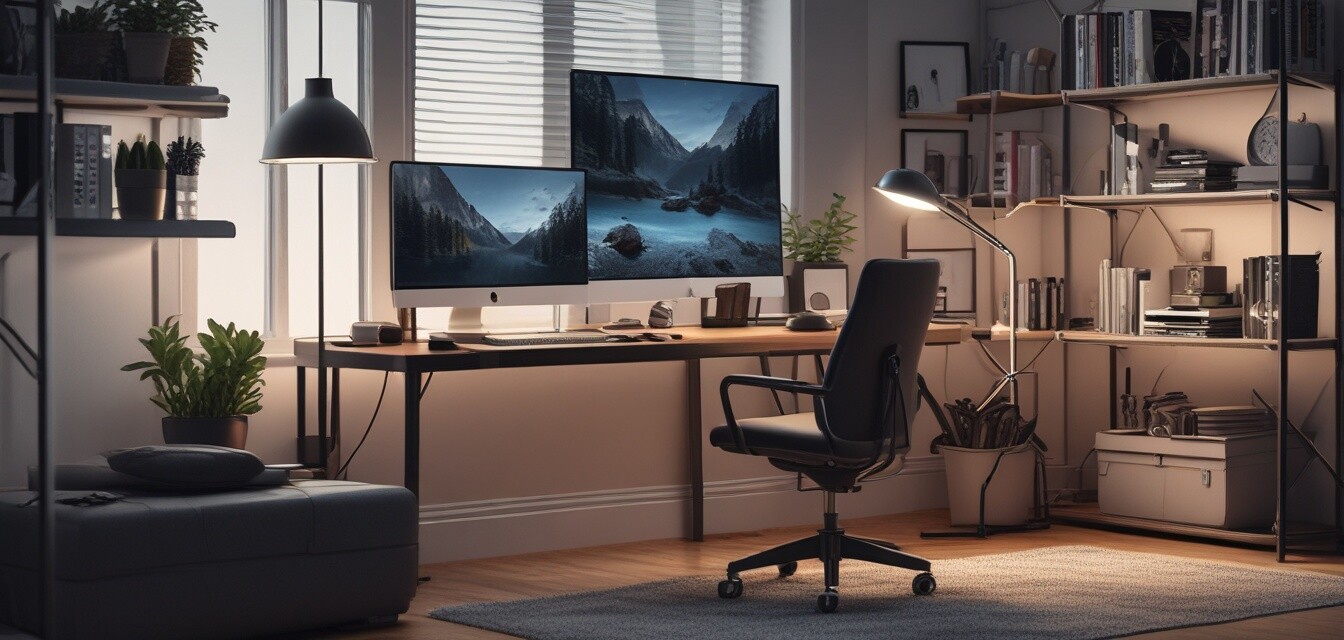
How to Create a Well-Designed Home Office Layout
Key Takeaways
- Plan your layout to maximize space and functionality.
- Incorporate ergonomics to enhance comfort during long working hours.
- Utilize technology like docking stations for efficient connections.
- Take advantage of natural light while reducing glare on screens.
- Add personal touches to make the space inspiring and motivating.
Creating a well-designed home office layout is crucial for ensuring productivity and comfort. Whether you are running a business or just working on a side project, a thoughtfully planned workspace can make a significant difference. Here, we’ll explore practical advice for planning an effective layout that facilitates productivity in your home office.
Identifying your workspace needs
Before diving into the actual design, you should first consider your unique needs and the way you work. Here are some essential questions to help you get started:
- What type of work will you be doing?
- Do you require multiple monitors, or working with a single screen is enough?
- How much storage do you need for files and office supplies?
- What ergonomic features are necessary for your comfort?
Essential elements of a good layout
A great home office layout includes several key elements to promote efficiency. Below are some essential components to incorporate into your design:
| Element | Description |
|---|---|
| Desk | A spacious desk allows enough room for your computer, paperwork, and accessories. |
| Chair | An ergonomic chair will help maintain good posture and provide comfort during long hours. |
| Lighting | Choose a combination of natural light and task lighting to minimize eye strain. |
| Storage | Incorporate shelves, cabinets, or organizers to keep your workspace tidy. |
| Technology | Utilize gadgets and devices like docking stations to streamline your setup. |
Creating your layout
Once you’ve identified your needs and basic components, it’s time to create a layout that works for you. Here’s how to approach this step-by-step:
- Map out your room: Create a simple blueprint of your space. Measure furniture and consider how to best utilize the available area.
- Think functionally: Place your desk in a way that minimizes distractions and maximizes productivity. Aim to face a wall or window.
- Set up your technology: Position your monitor(s) and wiring in a way that promotes efficiency. Use cable management solutions to keep cords organized.
- Add personal touches: Personalize your space with décor, plants, or color schemes that inspire you.
Focusing on ergonomics
Ergonomics is essential for maintaining your health and well-being while you work. Here are some recommendations:
Tips for an ergonomic workspace
- Keep your monitor at eye level to avoid neck strain.
- Use a chair with adjustable height and lumbar support.
- Position your keyboard and mouse to ensure your arms are at a 90-degree angle.
- Take regular breaks to move and stretch.
Incorporating technology
In today’s digital age, technology plays a vital role in enhancing your workspace. Consider tools that can make your life easier. Here’s how:
- Docking stations: These devices simplify your connection to various peripherals, reducing clutter.
- Multi-monitor setups: Enhance your productivity by allowing multiple applications to be visible at once.
- Networking solutions: Reliable connections are key—explore options for wired and wireless solutions that suit your needs.
Final touches
Once you have everything in place, it's time to add the final touches:
- Add personal items that make you feel good and motivate you to work.
- Incorporate plants for a touch of nature—they can enhance your mood.
- Ensure your workspace is well-organized to minimize distractions.
Conclusion
Designing a well-planned home office layout is beneficial for both productivity and comfort. By focusing on ergonomics, essential elements, and adding personal touches, you can create a workspace that inspires and motivates you. For more detailed information, check out our Buying Guides or explore custom solutions in our Ergonomic Accessories section.
Pros
- Increases productivity and focus.
- Boosts comfort and reduces strain.
- Offers flexibility and customization.
Cons
- Requires upfront investment for quality furniture.
- Time-consuming to find the right setup.
- Potential for distraction if not properly organized.